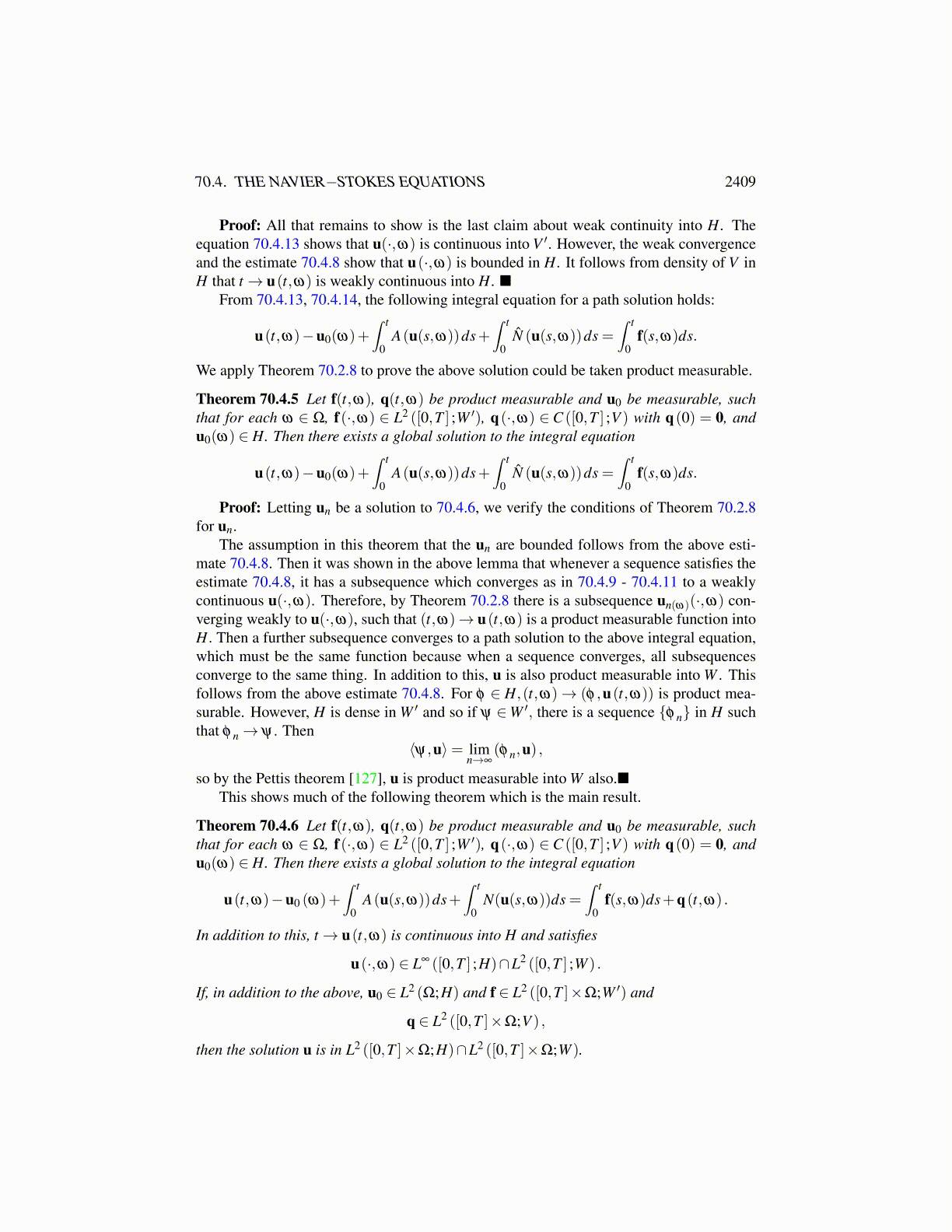
70.4. THE NAVIER−STOKES EQUATIONS 2409
for all w ∈V . This is to say that
R−1u′n (t)+PnR−1A(un (t))+PnR−1N̂ (un (t)) = PnR−1f(t) .
Now the projection map decreases norms and R−1 preserves norms. Hence∥∥u′n (t)∥∥
V ′ =∥∥R−1u′n (t)
∥∥V ≤ ∥A(un (t))∥V ′ +
∥∥N̂ (un (t))∥∥
V ′ +∥f(t)∥V ′ ,
from which it follows that u′n is bounded in L2 ([0,T ] ;V ′). Indeed, this is the case becauseA(un) and N̂ (un) are both bounded in L2 ([0,T ] ;V ′) . The term
∥∥N̂ (un (t))∥∥
V ′ can be splitfurther into terms involving ∥N (un)∥ ,∥B(un,q)∥ , and ∥B(q,un)∥. For example, considerN (un) which is the least obvious. Let w ∈ L2 ([0,T ] ;V ) . From the definitions,∣∣∣⟨N (un) ,w⟩L2([0,T ],V )
∣∣∣= ∣∣∣∣∫ T
0
∫U
uniun jw j,idxdt∣∣∣∣
≤ C∫ T
0∥w(t)∥V |un|2H dt
≤ C∥w∥L2([0,T ],V )C (u0, f,q,T,ω) .
We have now shown that
supt∈[0,T ]
|un (t,ω)|2H +∫ T
0∥un(s,ω)∥2
W ds+∥∥u′n(ω)
∥∥L2([0,T ];V ′) ≤C (u0, f,q,T,ω) . (70.4.8)
This condition holds for all ω. Now for each ω, one can take a subsequence such that asolution to the evolution equation is obtained. Then, when this is done, we will apply themeasurable selection result to obtain a product measurable solution.
It follows from the above estimate 70.4.8 that there is a subsequence, still denoted as nand a function u(t,ω) such that
un→ u weak ∗ in L∞ ([0,T ] ;H) , (70.4.9)
u′n→ u′ weakly in L2 ([0,T ] ;V ′) ,un→ u weakly in L2 ([0,T ] ;W ) ,
un→ u strongly in L2 ([0,T ] ;H) . (70.4.10)
This last convergence follows from Theorem 70.4.1. The sequence is bounded in the spaceL2 ([0,T ] ;W ) and the derivative is bounded in L2 ([0,T ] ;V ′) so such a strongly convergentsubsequence exists. Since A is linear, we can also assume that
Aun→ Au weakly in L2 ([0,T ] ;W ′) . (70.4.11)